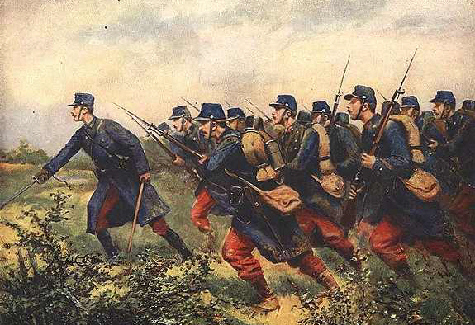 |
| Prime Minister Herbert Asquith & Minister for War David Lloyd George |
Lloyd George's unhappiness at the War Office deepened in the autumn of 1916. The war was going badly for the Allies and his efforts to circumvent the obstructionism of the CIGS and the generals had failed. He could see no ray of light ahead. Pondering on how to achieve greater civilian control of the generals, he could think of no other way than to remove the higher conduct of the war from Asquith's hands. As David Woodward, a leading authority on the period has observed, “It was Robertson and the military policy he represented – not Asquith – whom Lloyd George hoped to overthrow.”
Lloyd George admired Asquith's intellectual qualities, his skills as a parliamentarian, and the resourcefulness that he had shown as prime minister in times of peace. Indeed, during the prewar era Lloyd George had acted as a creative spark for the Liberal social program and someone on whom Asquith could depend, and the two, however different temperamentally, had formed a very effective team, but tensions in their relationship began to appear in the summer of 1915 owing to their differences over conscription. In the months that followed, the gap between the two became more acute as Lloyd George grew increasingly disillusioned with, and critical of, Asquith's inefficient and leisurely management of the war. Not only did Asquith defer to his generals, he also insisted on preserving the cabinet's executive authority. This meant that all major rulings in the War Council and its successors the Dardanelles Committee and the War Committee, were referred to the full cabinet, where too often issues which provoked disagreement were shelved rather than decided on one way or another.
As Lloyd George put more and more distance between himself and Asquith, he forged new links with a number of prominent Unionists. As a group, the Conservatives also wanted greater efficiency and speed in decision-making. They distrusted Lloyd George, however, regarding him as a Welsh radical who in previous years had been a fierce critic of the Boer War. Still they were impressed by his driving force and by his determined approach to waging war, regardless of infringements on individual liberty. In the final analysis they saw Lloyd George as a lesser evil than Asquith.
The press joined restive Conservatives to clamor for reform of the executive. The Morning Post summed up the frustration felt by many with Asquith's ministry when it wrote on 1 December 1916: “Nothing is foreseen, every decision is postponed. The war is not really directed – it directs itself.” There were demands that Asquith be replaced as prime minister by Lloyd George, who seemed better fitted to play the part of a war leader. In short, the country as a whole wanted a change, a livelier organizer of victory, a new Pitt. On 1 December 1916 Lloyd George, with Bonar Law's backing, presented Asquith with a plan that would reconstruct the system for prosecuting the war. This involved delegating executive authority to a small committee consisting of three or four ministers free of departmental responsibilities and under the chairmanship of Lloyd George. Asquith would be excluded from the new body but would remain prime minister. After some modification, Asquith accepted the arrangement. On 4 December, however, a leading article in the Times attacked Asquith personally and implied that he had been reduced to a subordinate position in his own cabinet. The piece was clearly written by someone with good inside information. It appears that Carson was the informant but Asquith suspected Lloyd George, who was known to have friendly relations with Lord Northcliffe, owner of the Times. His pride injured, Asquith repudiated his earlier agreement with Lloyd George, determined to fight. Lloyd George's response was to resign. Asquith could have weathered Lloyd George's defection, but confronted by the loss of all, or nearly all, of the Conservatives in the cabinet, he had no option but to resign.
 |
| Punch, 20 December 1916 |
The king immediately sent for Bonar Law, the most obvious choice to succeed Asquith. Bonar Law declined the offer when Asquith made it clear that he would not serve under him. Thereupon the king turned to Lloyd George and invited him to form a government. Lloyd George accepted and from 7–9 December garnered enough support from Conservatives, Labour, and Liberal sympathizers to form a government. His longstanding ambition to succeed Asquith had been achieved, not so much by intrigue as by accident. Lloyd George was 54 years old when he moved to 10 Downing Street in December 1916. His accession to power reflected the nation's repudiation of Asquith's “wait and see policy” and a desire for a more ruthless and forceful prosecution of the war. The country as a whole counted on him to break through the inertia of the previous administration and turn the tide in 1917. Although he could expect a short period of grace, he realized that he would have to produce tangible victories, not only for his own political survival but also to boost the morale of the war weary British public. He feared that continued massive casualties in futile offensives, such as had occurred at the Somme, would only increase public support for a negotiated peace.
From: Lloyd George at War, 1916-1918 by George Cassar















































